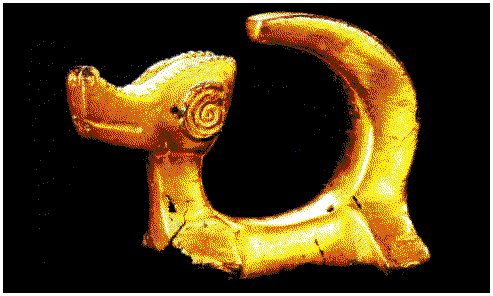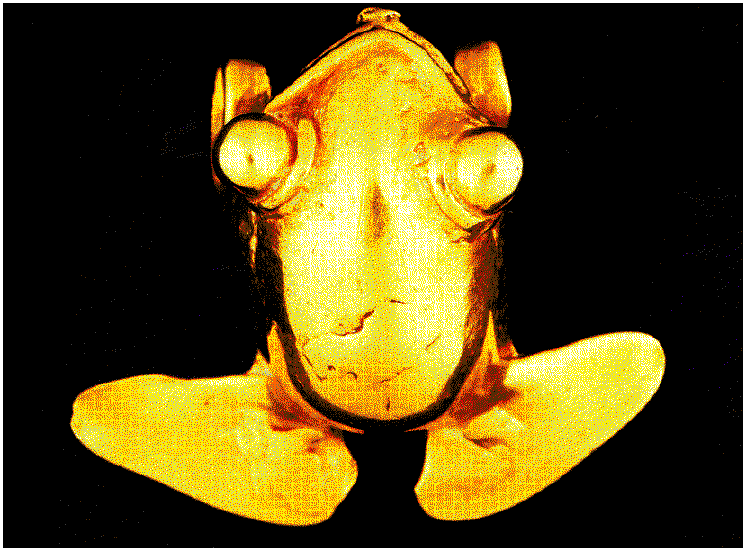Gold of Ancient Panama
Carol Haralson
(Gilcrease Museum)

Panama was the first place in which the Spaniards were able to find substantial caches of gold, mostly in the form of ornaments --- eagles, crocodiles, frogs, bats, and seahorses --- as well as bracelets and other jewelry. As a reward for the Indians sharing their food, their ladies and their treasures, the Spanish over the next few years managed to kill all of them off. They decimated the Chibchans and Chocoans with their viruses, their slavery, and their sheer animal brutality.
Some of the gold figures made the Spaniards uneasy, so they hastened to melt them down and send the ingots off to Charles V who was being dunned by his bank, his solicitor, and his wife Isabella who wanted a new castle.
The authors of To Capture the Sun suggest that it is impossible to estimate the number of gold artifacts that were melted down ... but the few that remain (and make up part of this collection) should convince us that the craft of such pieces was design of the highest artistic value. Though some of us may have our doubts.
For we have here various frog, monkey and human effigies that look to have been designed by a deranged Picasso, which is why they gave the Spaniards (and now may give us) the heebie-jeebies.
For instance, a golden bat on page eighty-two (the flying kind, not the baseball variety) looks like King Kong just after they took Fay Wray away from him. If I were Columbus I would have smelted it down in a trice.
And a representation of a visitor, possibly from Mars [Fig. 2 below] might certainly get the King to swear off his regular after-dinner snifter and next week's planned umpteenth war with France.
Still, there are a couple of attractive gold pieces here. They include a Tairona from "the Intermediate area" (south of Panama) and a dog from Gran Coclé that is a charmer, what's left of it. [See Fig. 1 above].
There are over a hundred color plates here, all composed with care and affection, and the book itself is a jewel, although the commentary is but mildly interesting, and a lengthy disquisition of "the importance of shine" lost me.
The theory is that gold didn't have the same value for the indigenous people of Panama as it did for the visitors from Spain. They valued it because it would make it possible for Charles V to finish running the Muslims out of Spain and at the same time pay off his American Express card. The Chibchans and Chocoans valued gold for its brightness, for its ability to capture light and to awe enemy soldiers in battle. As Nicholas J. Saunders writes,
- The power of light, whether appearing in natural phenomena or 'captured' in shiny objects, was understood to be a characteristic of, and controlled by, ancestors, spirits, deities and immanent forces.
"Thus," he concludes, "shamans, priests, sorcerers and dynastic rulers --- who manipulated glittering power objects such as mirrors, metals, jade, and gemstones --- were the spiritual and political power-brokers of the pre-Columbian world."

--- Carlos Amantea